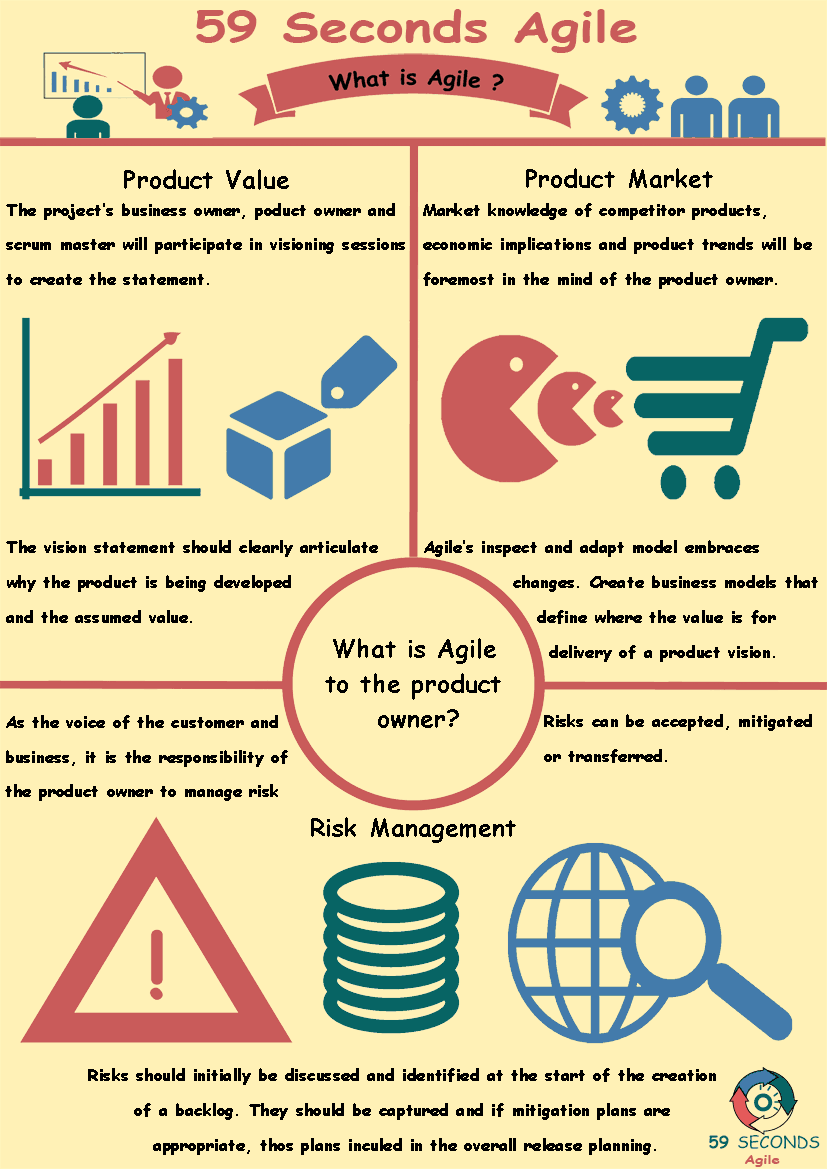
What Is Agile To The Product Owner?
Agile principles support the work of motivated individuals who are committed to delivering the highest value product. The Agile Scrum framework has three key roles: product owner, scrum master, and the scrum team members. The product owner is the true representative of the business vision and the voice of the customer.
The role has the responsibility as the primary communicator of the goals and objectives to be realized in the delivery of a product. The product owner must be business savvy; having a clear understanding of the value to be delivered with the product, the product market and the business’ tolerance level for risk.
Product Value
Agile product owners work with stakeholders and scrum teams to deliver several scrum artifacts. The first in importance for a project is the vision statement. The vision statement should clearly articulate why the business is undertaking the time and cost of delivering a product. The vision statement is the baseline for the product features. The project’s business owner, product owner and scrum master will participate in visioning sessions to create the statement.
All of the impacted stakeholders should review and approve the statement before the project moves forward. The statement is a baseline in that Agile principles focus on being able to accept and adapt to change in the market, in the product or in the business assumptions. Therefore, the vision statement should clearly articulate why the product is being developed and the assumed value. It should not be so specific as to make it difficult to update during the life of the project. The vision statement will be used as an input to the backlog throughout the life of the project and be an output when modifications to the vision are required.

The Product Backlog
The product backlog is a listing of features that will be the primary roadmap for the life of the project. The product owner is responsible for creating, communicating and refining the backlog. Value is demonstrated in the prioritization of features to ensure that the items with maximum market impact are delivered first. Features included will focus on new delivery as well as items required to make a product sustainable and scalable. Just enough information in terms of descriptions is included to avoid wasting time and money on features that may not make it to an executable sprint. The product owner will re-order and re-scope the backlog throughout the project to meet the needs of all stakeholders.
Our Favourite Agile Books
We found these books great for finding out more information on Agile Scrum:
Product Market
The product owner will have immense knowledge of the business that the product supports. Equally important is having an understanding of the market and the needs of the end-users or customers who will purchase and use the product. Market knowledge of competitor products, economic implications and product trends will be foremost in the mind of the product owner. As sprints are delivered to the market, the product owner will need to stay abreast of the acceptance and any modifications required. Agile’s inspect and adapt model embraces changes and transparency. It is the responsibility of the product owner to communicate changes in the market and potential challenges to the scrum master and team for faster adoption. A strong product owner will create business models that define where the value is for delivery of a product vision and backlog. The product owner must also be able to communicate with various levels of authority to translate market changes that will impact design and delivery.
Risk Management
As the voice of the customer and business, it is the responsibility of the product owner to manage risk in the delivery of a product. Risks can be accepted, mitigated or transferred. Agile scrum focuses on fast delivery but, not to the deterrence of the customer and product. Governance through the identification and management of risks is a component of the product owner’s responsibilities. Ignoring risks will create a situation where the Definition of Done may not be fully realized.
While the scrum master is the individual who generally works to coordinate the team members mitigating risks, the product owner will understand the impact of risks on the product vision and backlog. With final responsibility for successful delivery, the product owner should take the lead in risk management. The framework for risk management (analysis, planning, monitoring and controlling) are best handled by the product owner based on the relationship with the product backlog.

